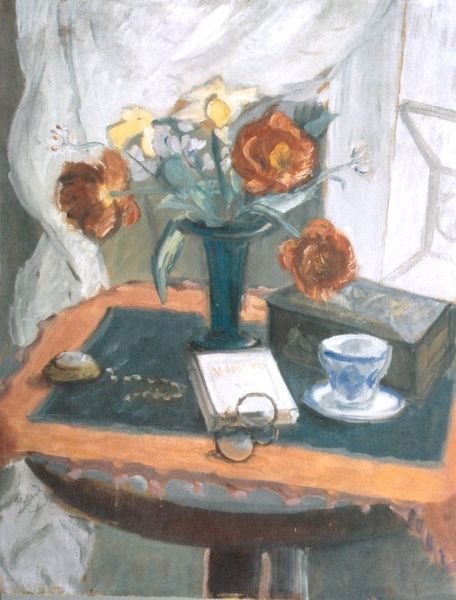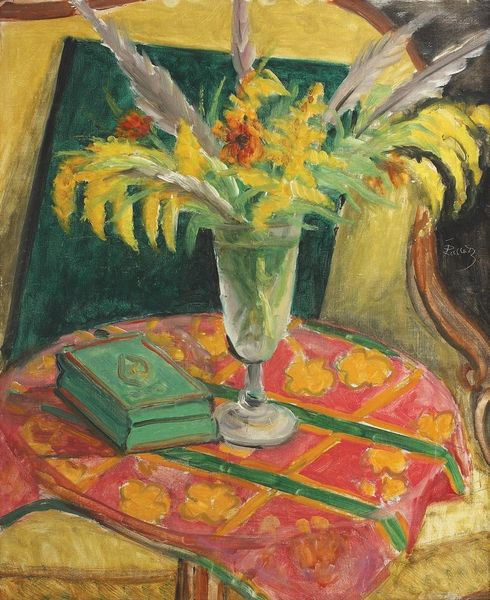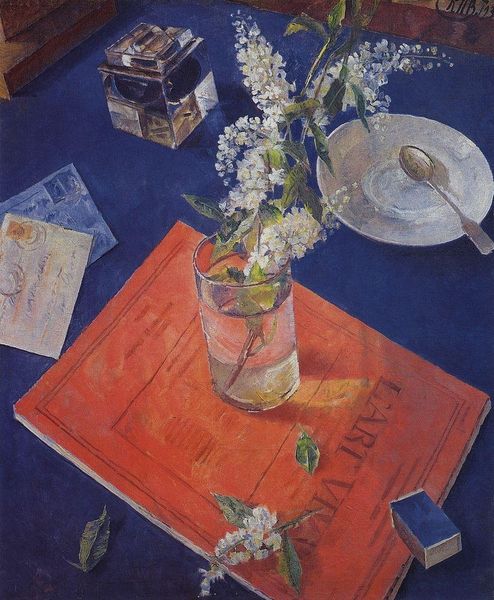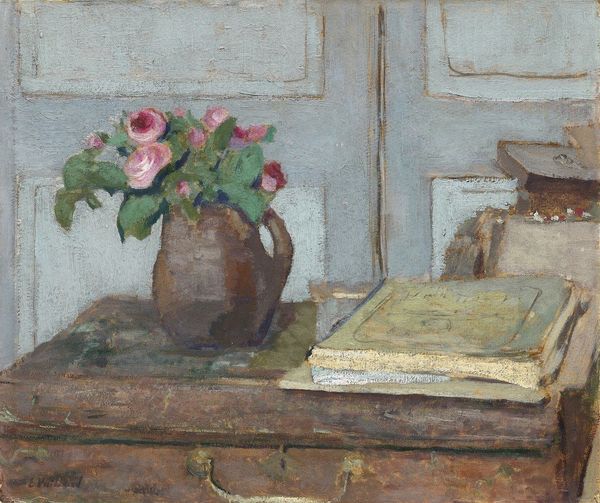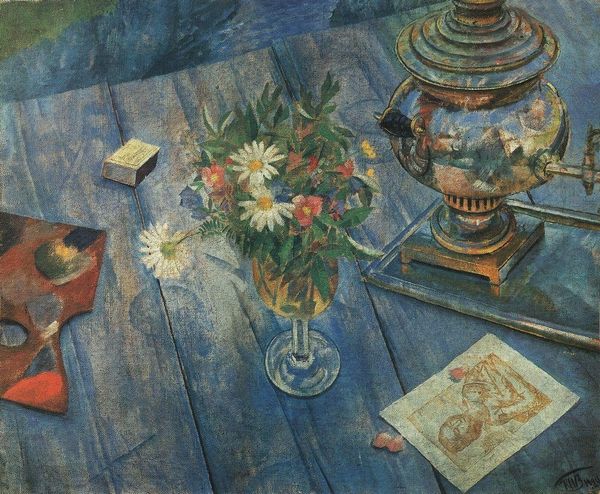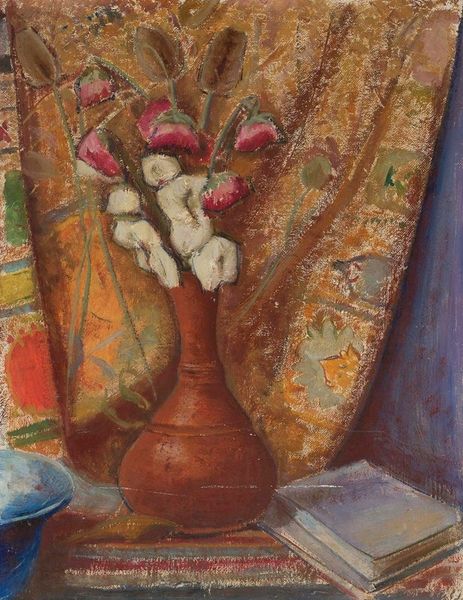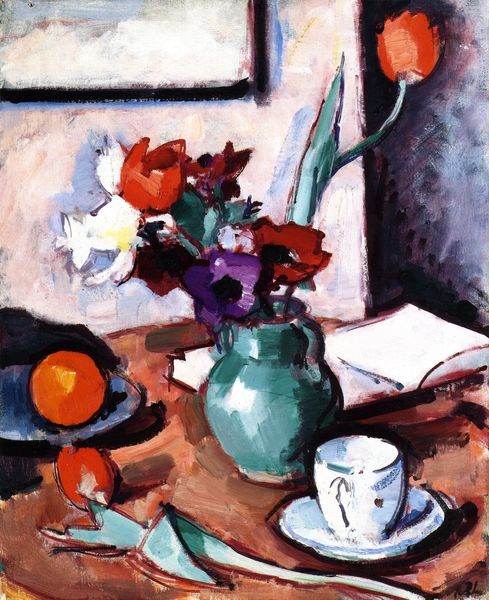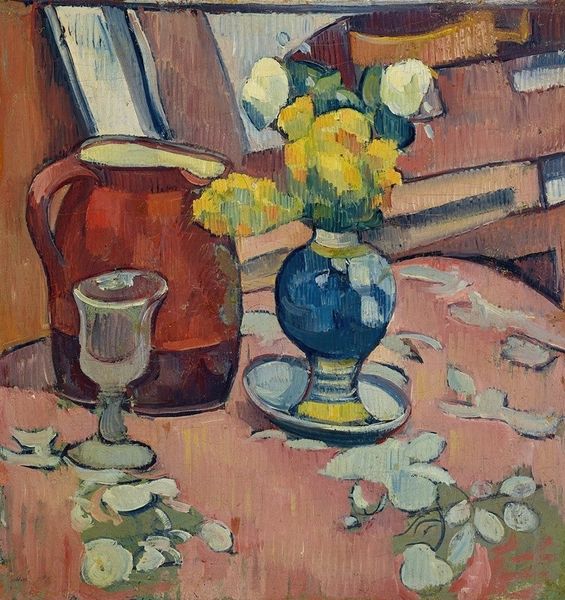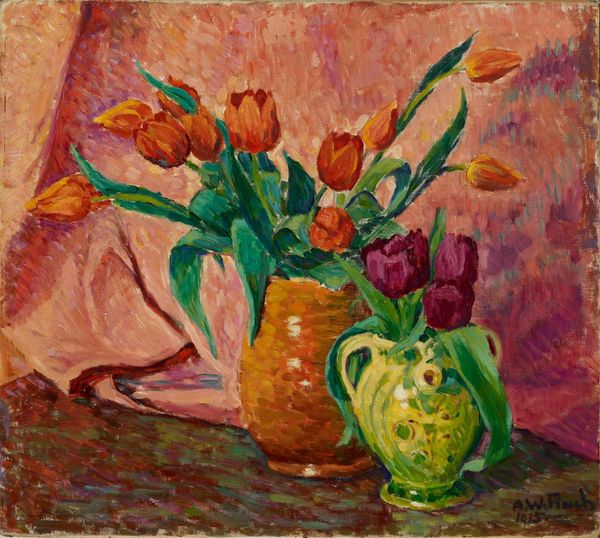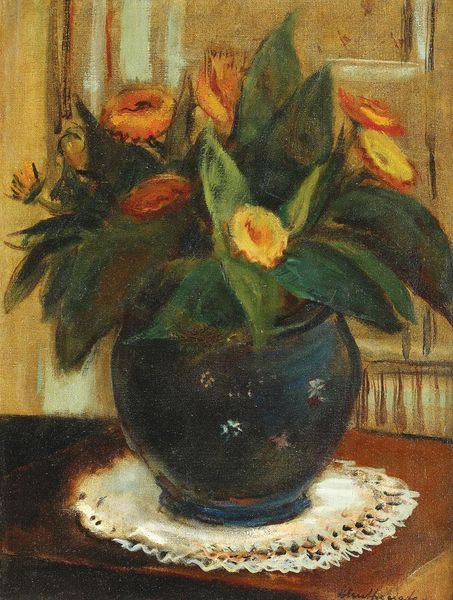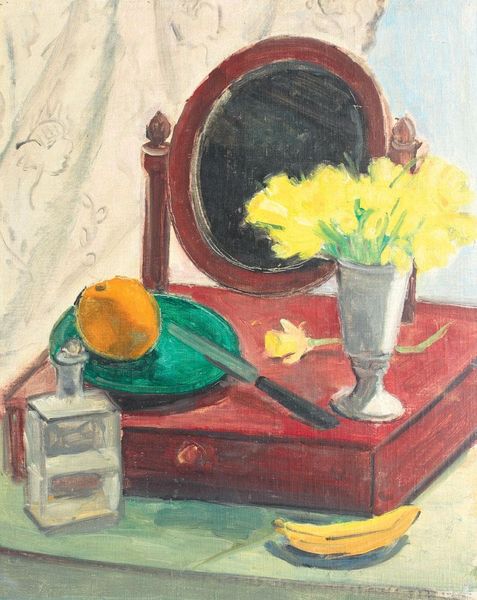
painting, oil-paint, watercolor, impasto
painting
oil-paint
possibly oil pastel
oil painting
watercolor
impasto
academic-art
watercolor
realism
Copyright: Theodor Pallady,Fair Use
Editor: So, this is Theodor Pallady's "Poppy Flowers," it seems to be oil on canvas, though I couldn’t find a specific date. It's a still life, and the thing that strikes me most is its intimate, almost domestic feel. What do you see in this piece? Curator: Beyond the surface-level beauty, I see a commentary on the role of women in early 20th-century society. The still life genre, often associated with domestic spaces, became a space for female artists, and Pallady, painting flowers and household objects, engages with that world. Does the composition – the balance between the natural, the domestic, and the intellectual - suggest anything about societal expectations or roles to you? Editor: I hadn't really considered that angle. I guess the open book and magnifying glass next to the vase and fruit…it could symbolize intellectual pursuits versus domesticity, maybe? Curator: Precisely! Think about the male gaze and its historical dominance in art. By focusing on traditionally "feminine" subjects, Pallady is inadvertently questioning and subverting those established norms. Does the subdued palette play a role here? How does the coloring create a sense of intimacy, drawing the viewer into this private space? Editor: The colors are definitely muted, almost faded. Maybe it suggests the quiet lives, the unseen labor, that defined women’s roles during that time? It makes you think about the politics behind the imagery in this artwork, like how certain materials are included. Curator: Yes, and think about the "academic art" style that is applied here, and how the application may not be so incidental. Pallady, a male artist, adopting a style associated with female spaces... it adds another layer. Now what do we consider? Editor: That’s really fascinating. I originally saw a simple still life, but now I realize there are complex gender and social dynamics at play. Thanks, that perspective really opened my eyes! Curator: Indeed, that's the power of contextualizing art. It reveals narratives that might otherwise remain hidden, which inspires conversations about how we approach modern gender studies.
Comments
No comments
Be the first to comment and join the conversation on the ultimate creative platform.
